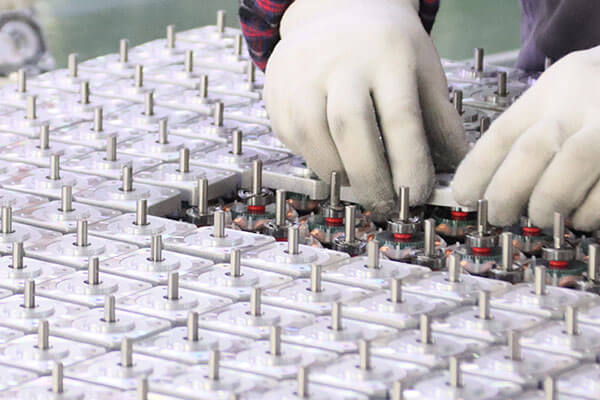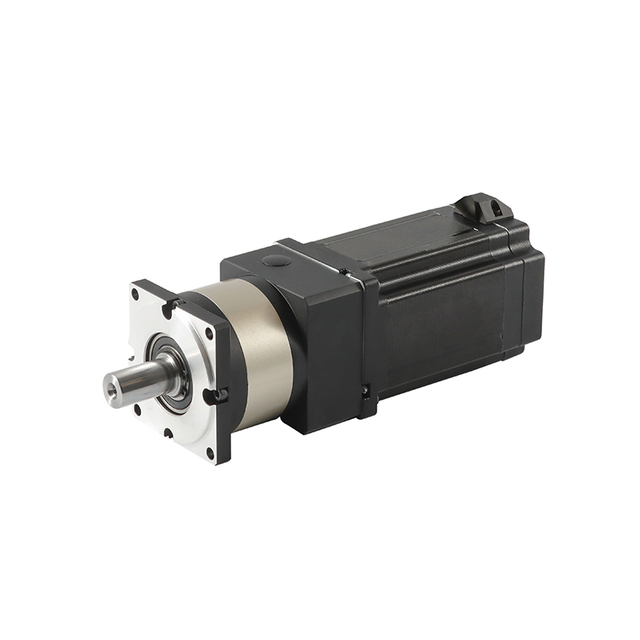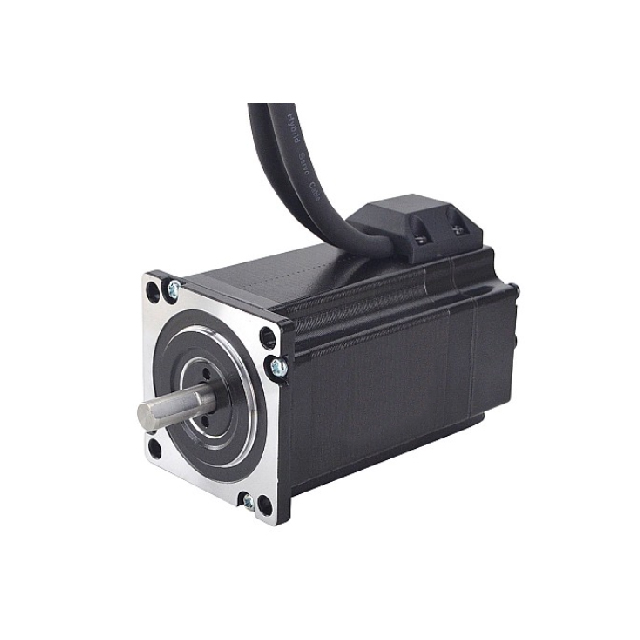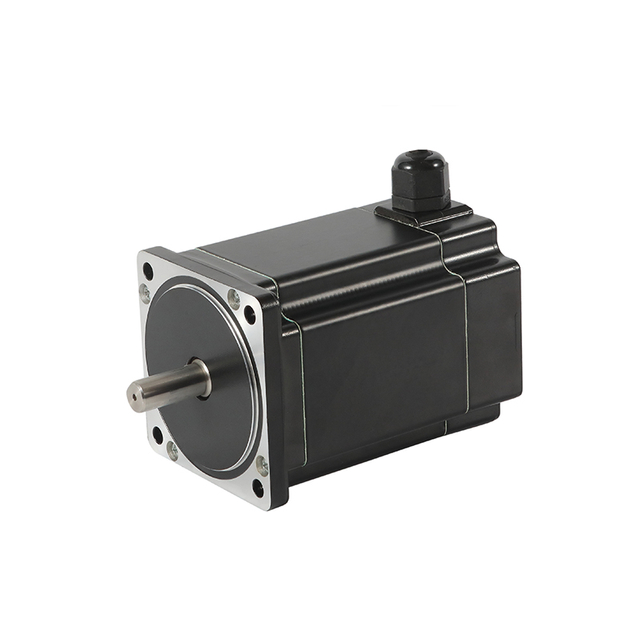
Understanding the difference between 0.9° and 1.8° stepper motors is crucial when precision motion control matters. Both motor types are widely used in CNC machines, robotics, 3D printers, and industrial automation systems. However, while they look similar, their performance characteristics and ideal use cases differ significantly.
In this comprehensive guide, we explore the key differences, performance factors, and practical applications of each, helping you make the right choice for your system.
Overview: 0.9° vs 1.8° Stepper Motors
Stepper motors move in fixed mechanical increments called step angles.
A 1.8° stepper motor rotates 1.8 degrees per step, offering 200 steps per revolution.
A 0.9° stepper motor rotates 0.9 degrees per step, offering 400 steps per revolution.
| Feature | 1.8° Stepper Motor | 0.9° Stepper Motor |
| Steps per revolution | 200 | 400 |
| Step angle | 1.8° | 0.9° |
| Resolution | Standard | Higher |
| Torque | Higher | Slightly lower (in many cases) |
| Speed | Higher | Lower maximum speed |
| Applications | General automation, 3D printing, CNC | High-precision CNC, optical systems, pick-and-place tools |
Why Step Angle Matters in Stepper Motors
The step angle of a stepper motor determines how far the motor shaft rotates with each electrical pulse. This single characteristic directly influences the resolution, smoothness, and precision of motion, making it one of the most critical parameters in motion-control system design.
A smaller step angle means more steps per revolution, which increases the motor’s ability to position accurately and move smoothly. Conversely, a larger step angle reduces the number of steps per revolution, prioritizing speed and torque over fine positioning.
Key Reasons Step Angle Is Important
1. Positioning Resolution
The step angle defines the smallest motion the motor can produce.
Smaller step angle (e.g., 0.9°) → twice the resolution of a 1.8° motor
Ideal for applications requiring micro-level positioning accuracy
This is crucial for systems where even slight deviation impacts performance — such as laser equipment, precision CNC machines, and scientific instruments.
2. Motion Smoothness
Motion created in smaller increments reduces vibration and resonance.
This makes low-speed motion more stable and reduces noise — a significant benefit for 3D printers, optical equipment, and medical devices.
3. Reduced Mechanical Error Accumulation
Every stepper has inherent mechanical tolerances.
A smaller step angle spreads error across more steps, minimizing the effect of mechanical inaccuracies and improving repeatability.
4. Microstepping Performance
Microstepping drivers enhance resolution and smoothness by dividing each step into smaller electrical microsteps.
However, starting with a smaller base step angle (like 0.9°) improves microstepping accuracy and stability even further, delivering exceptional motion precision.
5. Balance Between Torque and Precision
While smaller step angles offer higher accuracy, they also require:
More pulses per revolution
Greater controller performance
Slightly reduced top-end torque in many cases
Choosing the right step angle helps balance precision, torque, and speed for your specific application.
In short:
The step angle defines how precisely a stepper motor moves. It drives everything from motion quality and resolution to system responsiveness and mechanical accuracy. Selecting the right step angle ensures your motion system performs with the accuracy and efficiency your application demands.
Performance Comparison: Precision and Smoothness
1. Positioning Accuracy
A 0.9° motor inherently provides finer detail control. With 400 steps per revolution, it can position a mechanical load more accurately without relying solely on microstepping.
1.8° steppers, while accurate, rely more heavily on microstepping to match the resolution of 0.9° motors.
Bottom line: If you need sub-millimeter precision, fine optical alignment, or precision metrology, the 0.9° motor provides a native accuracy advantage.
2. Motion Smoothness
0.9° motors deliver smoother motion with less vibration, especially noticeable at low speeds. This is a key reason they are favored in precision robotics and high-end 3D printers.
In contrast, 1.8° motors may produce more audible stepping noise and subtle vibration.
3. Torque Characteristics
Torque delivery differs naturally due to electrical and mechanical structure:
| Comparison | Winner |
| Holding torque | 1.8° motor (typically) |
| Low-speed torque ripple | 0.9° motor |
| Torque stability at precision steps | 0.9° motor |
| High-speed torque capacity | 1.8° motor |
Because 1.8° motors require fewer pulses per revolution, they maintain torque better at high speeds.
4. Speed and Acceleration
If your priority is speed and power, choose a 1.8° stepper motor. With fewer steps per revolution, they reach higher RPMs more efficiently and typically handle sudden acceleration better.
0.9° steppers excel where slow, controlled movement matters more than raw velocity.
Electrical Characteristics & Driver Requirements
The electrical behavior of a stepper motor and the capabilities of its driver are fundamental to achieving optimal motion performance. The step angle not only affects mechanical movement but also determines the electrical pulse rate, driver bandwidth, and current control precision required from the motion controller.
A motor with a smaller step angle (such as 0.9°) demands twice as many pulses per revolution compared to a 1.8° motor. As a result, the control electronics must operate at higher pulse frequencies to achieve equivalent rotational speed. This makes driver selection and system tuning critical when using high-resolution motors in demanding applications.
Pulse Frequency & Step Signal Requirements
Stepper motors convert step pulses into mechanical movement.
To achieve the same shaft speed, a 0.9° motor requires double the step frequency. Systems lacking sufficient pulse generation capability may fail to reach target speeds or exhibit unstable motion.
Driver Performance and Control Electronics
High-resolution motors benefit from advanced stepper drivers designed for:
High-frequency pulse output
Precise current regulation
Sophisticated microstepping algorithms
Low-noise switching control
Modern digital drivers enhance accuracy and vibration suppression, allowing 0.9° motors to perform at their full potential. Basic drivers can operate both types, but advanced hardware ensures smooth, accurate motion under dynamic load.
Current and Voltage Considerations
Both 1.8° and 0.9° motors typically share similar current ratings; however, electrical demands vary based on:
Winding resistance
Inductance levels
Operating voltage
Load acceleration needs
Lower inductance designs respond faster to current changes, improving high-speed torque and microstepping response — a critical advantage in precision systems.
Microstepping Requirements
Microstepping drivers divide each full step into many smaller electrical increments, dramatically improving:
Smoothness
Noise performance
Positional granularity
Although both motor types benefit, 0.9° motors paired with high-quality drivers achieve exceptional positioning fidelity and stability, especially in applications with ultra-fine motion requirements.
Controller Considerations
To fully support high-resolution motion control, the control system should provide:
High-speed pulse generation capability
High-bandwidth communication
Efficient acceleration and deceleration control
Advanced current control modes (e.g., field-oriented control in hybrid drives)
Industrial CNC systems, robotic controllers, and modern 3D printer boards typically meet these requirements, whereas entry-level motion controllers may struggle at top speeds with 0.9° motors.
Summary: Electrical & Driver Needs
| Factor | 1.8° Motor | 0.9° Motor |
| Pulse rate requirements | Standard | Higher |
| Driver quality sensitivity | Moderate | High |
| Microstepping advantages | Strong | Exceptional |
| Control electronics demand | Moderate | Higher |
| Ideal use | Balanced performance systems | High-precision, high-resolution motion |
Bottom line:
A 0.9° stepper motor offers superior precision, but to unlock its full performance potential, it must be paired with high-quality drivers and capable motion control electronics. Meanwhile, 1.8° motors provide excellent response with standard drivers, making them more broadly compatible for general automation tasks
Real-World Applications
✅ Best Uses for 0.9° Stepper Motors
Precision CNC systems
High-Resolution 3D Printers (e.g., resin printers, advanced FDM)
Semiconductor handling systems
Linear stages and optical equipment
Pick-and-place robotics
Laboratory automation
When accuracy, smoothness, and micro-precision are required, go 0.9°.
✅ Best Uses for 1.8° Stepper Motors
When speed and torque with robust economy are the goal, 1.8° is the go-to.
Microstepping: Where Both Motors Shine
Microstepping drivers improve smoothness and resolution for both types, but:
Even with microstepping, starting accuracy is better with a 0.9° motor due to fundamental mechanical resolution.
Choosing the Right Stepper Motor
| Priority | Recommended Motor |
| Highest precision and smoothness | 0.9° stepper |
| Best torque & speed | 1.8° stepper |
| Cost-effective general solution | 1.8° stepper |
| Optical alignment or micro-applications | 0.9° stepper |
| Large motion system, long belt drives | 1.8° stepper |
Conclusion
The difference between 0.9° and 1.8° stepper motors lies in resolution, torque behavior, speed capability, and smoothness. A 0.9° stepper motor offers twice the native resolution, making it the superior choice for precision applications, while a 1.8° motor remains the industry standard for most industrial and hobby uses thanks to its higher torque, speed capability, and cost-efficiency.
Carefully evaluate your machine's requirements—precision vs speed, accuracy vs torque—to select the best option for your system.
English
العربية
Français
Русский
Español
Português
Deutsch
italiano
日本語
한국어
Nederlands
Tiếng Việt
ไทย
Polski
Türkçe
ພາສາລາວ
ភាសាខ្មែរ
Bahasa Melayu
ဗမာစာ
Filipino
Bahasa Indonesia
magyar
Română
Čeština
Монгол
қазақ
Српски
हिन्दी
فارسی
Slovenčina
Slovenščina
Norsk
Svenska
українська
Ελληνικά
Suomi
Հայերեն
עברית
Latine
Dansk
Shqip
বাংলা
Hrvatski
Afrikaans
Gaeilge
Eesti keel
Oʻzbekcha
latviešu
Azərbaycan dili
Български
Català








